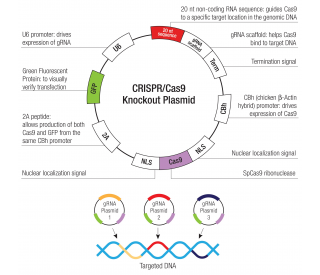Purity
>97%, by SDS-PAGE under reducing conditions and visualized by silver stain
Endotoxin Level
<1.0 EU per 1 μg of the protein by the LAL method.
Activity
Measured by its ability to chemoattract BaF3 mouse pro‑B cells transfected with mouse CX3CR1. The ED 50 for this effect is 0.02-0.08 µg/mL.
Source
Spodoptera frugiperda, Sf 21 (baculovirus)-derived
Rat CX3CL1/Fractalkine
(Gln25-Thr334)
Accession # O55145IEGR GGGSGGGSGGGS HHHHHHHHHH N-terminus C-terminus Accession #
N-terminal Sequence
AnalysisNo results obtained: Gln25 predicted
Predicted Molecular Mass
36 kDa
SDS-PAGE
100 kDa, reducing conditions
Carrier Free
What does CF mean?
CF stands for Carrier Free (CF). We typically add Bovine Serum Albumin (BSA) as a carrier protein to our recombinant proteins. Adding a carrier protein enhances protein stability, increases shelf-life, and allows the recombinant protein to be stored at a more dilute concentration. The carrier free version does not contain BSA.
What formulation is right for me?
In general, we advise purchasing the recombinant protein with BSA for use in cell or tissue culture, or as an ELISA standard. In contrast, the carrier free protein is recommended for applications, in which the presence of BSA could interfere.
536-FR/CF |
| 536-FR |
Formulation Lyophilized from a 0.2 μm filtered solution in PBS. | Formulation Lyophilized from a 0.2 μm filtered solution in PBS with BSA as a carrier protein. | |
Reconstitution Reconstitute at 100 μg/mL in sterile PBS. | Reconstitution Reconstitute at 100 μg/mL in sterile PBS containing at least 0.1% human or bovine serum albumin. | |
Shipping The product is shipped at ambient temperature. Upon receipt, store it immediately at the temperature recommended below. | Shipping The product is shipped at ambient temperature. Upon receipt, store it immediately at the temperature recommended below. | |
Stability & Storage: Use a manual defrost freezer and avoid repeated freeze-thaw cycles.
| Stability & Storage: Use a manual defrost freezer and avoid repeated freeze-thaw cycles.
|
Background: CX3CL1/Fractalkine
CX3CL1, also named neurotactin, is a member of the delta chemokine subfamily that contains a novel C-X3-C motif. Unlike other known chemokines, CX3CL1 is a type 1 membrane protein containing a chemokine domain tethered on a long mucin-like stalk. Rat CX3CL1 cDNA encodes a 393 amino acid (aa) residue precursor protein with two alternative (21 aa or 24 aa residue) putative signal peptides, a 74 aa or 76 aa residue globular chemokine domain, a 238 aa residue stalk region rich in Gly, Pro, Ser and Thr and containing degenerate mucin-like repeats, a 19 aa residue transmembrane segment and a 36 aa residue cytoplasmic domain. The extracellular domain of CX3CL1 can potentially be released as a soluble protein by proteolysis at the conserved dibasic motif proximal to the transmembrane region. With the exception of the stalk region, rat CX3CL1 shares a high degree of amino acid sequence homology (83% sequence identity) with human and mouse CX3CL1. CX3CL1 is expressed in various tissues including heart, brain, lung, kidney, skeletal muscle, and testis. In rat brain, CX3CL1 expression was found to be localized principally to neurons. The expression of CX3CL1 was also reported to be up-regulated on activated endothelial cells. Membrane-bound CX3CL1 has been shown to promote adhesion of leukocytes. The soluble chemokine domain of human CX3CL1 was reported to be chemotactic for T cells and monocytes while the soluble chemokine domain of mouse CX3CL1 was reported to chemoattract neutrophils and T‑lymphocytes but not monocytes. CX3CR1, previously named V28 or chemokine beta receptor‑like 1, has been found to be a specific receptor for CX3CL1. In addition, US28, a 7TM receptor encoded by human cytomegalovirus that binds multiple CC chemokines, has also been shown to bind CX3CL1 with high-affinity.
References:
Kledal, T.N. et al. (1998) FEBS Lett. 441:209.
Combadiere, C. et al. (1998) J. Biol. Chem. 273:23799.
Harrison, J.L. et al. (1998) Proc. Natl. Acad. Sci. USA 95:10896.
Rossi, D.L. et al. (1998) Genomics 47:163.
Entrez Gene IDs:
6376 (Human); 20312 (Mouse); 89808 (Rat)
Alternate Names:
ABCD-3; C3Xkine; chemokine (C-X3-C motif) ligand 1; CX3C membrane-anchored chemokine; CX3CL1; CXC3; CXC3C; FKN; Fractalkine; Neurotactin; neurotactin); NTNsmall inducible cytokine subfamily D (Cys-X3-Cys), member 1 (fractalkine; NTTSmall-inducible cytokine D1; SCYD1C-X3-C motif chemokine 1; small inducible cytokine subfamily D (Cys-X3-Cys), member-1










